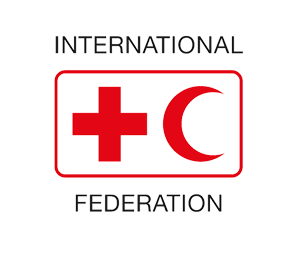Cholecystectomy

Cholecystectomy is a surgical removal of the gallbladder. The operation is done to remove gallstones or to remove an infected, inflamed gallbladder.
What is the symptoms that you may need cholecystectomy?
- Sharp pain in the upper center or right abdomen.
- Low fever.
- Nausea and feeling bloated.
- Jaundice (yellowish of skin).
What is common diagnostic tests for cholecystectomy?
- Abdominal ultrasound: this is the most common test to check for gallstones. You may be asked not to eat for 8 hours before the test.
- Blood test: Complete blood count, Liver function tests, Coagulation profile.
- Sonography.
- Endoscopic retrograde cholangiogram.
- Magnetic resonance.
- Endoscopic Retrograde Cholangiopancreatography.
What is different kind of treatment?
1) Surgery:
- Laparoscopic cholecystectomy: the gall bladder is removed with instruments placed into 4 small incision in the abdomen.
- Open cholecystectomy: the gallbladder is removed through an incision on the right side under the rib cage.
2) Nonsurgical (only gallstones, without cholecystitis):
- Increase your exercise. Exercising 2 to 3 hours, a week reduces the risk of gallstones.
- Eat more fruit and vegetables, and eat less food high in sugars and carbohydrates like donuts, pastry, and white bread.
- Alternative medication options are available. Stone retrieval.
For gallstones without symptoms:
- Watchful waiting
- Increased exercise
- Diet changes
| For properly checking this procedure, you can contact Iranian Hospital Surgical Specialty Clinics |
What is your expectations for cholecystectomy:
Before your operation:
Evaluation usually includes blood work, an abdominal ultrasound, and an evaluation by your surgeon and anesthesia provider to remove your health history and medications and to discuss pain control options.
The day of your operation:
You will not eat or drink for at least 8 hours before the operation. Most often, you will take your normal medication with a sip of water. Your recovery: if you have no complications, you are often discharged home the same day after laparoscopic procedure and in 2 to 3 days after an open procedure.
Call your surgeon if you are in severe pain, have stomach cramping, a high fever or chills, your skin turns yellow, or there is odor and increased drainage from your incision.
What should the patient do after discharge?
The patient should be concerned about different kinds of nutrition, activity, work, wound care, bowel movement, and high-fiber foods as follows:
Thinking clearly:
- The anesthesia may cause you to feel different for 2 or 3 days, do not drive, drink alcohol, or make any big decisions for at least 2 days.
Nutrition:
- When you wake up you will be able to drink small amounts of liquid. If you are not nauseous, you can begin eating regular foods.
- Continue to drink lots of fluids, usually about 8 to 10 glasses per day.
Activity:
- You will be helped getting out of bed and walking.
- Slowly increase your activity.
- Do not lift or participate in strenuous activity for 3-5 days for laparoscopic and 10-14 days for open procedure.
- Avoid driving until your pain is under control without narcotics.
- You can have sex when you feel ready, usually after your sutures or staples are removed.
- It is normal to feel tired. You may need more sleep than usual.
Work:
- You can go back to work when you feel well enough. Discuss the timing with your surgeon.
Wound care:
- Always wash your hands before and after touching near your incision site.
- Follow your surgeon's instructions on when to change your bandages.
- Do not soak in a bathtub until your stitches, steri-strips, or staples are removed. You may take a shower after the second postoperative day unless you are told not to.
- A small amount of drainage from the incision is normal. If the drainage is thick and yellow or site is red, you may have an infection so call your surgeon. • Avoid wearing tight or rough clothing.it may rub your incisions and make it harder for them to heal.
Bowel movements:
- After intestinal surgery, you may have loose watery stools for several days. If watery diarrhea lasts longer than 3 days, contact your surgeon.
- Pain medication can cause constipation. Increase the fiber in your diet with high fiber foods if you are constipated. Your surgeon may also give you a prescription for a stool softener.
High-fiber foods:
Food high in fiber include beans, cereals and whole grain breads, peas, dried fruit, blackberries, strawberries, sweet corn, broccoli, baked potatoes with skin, plums, pears, apples, greens, and nuts.
| For properly checking this procedure, you can contact Iranian Hospital Surgical Specialty Clinics |

